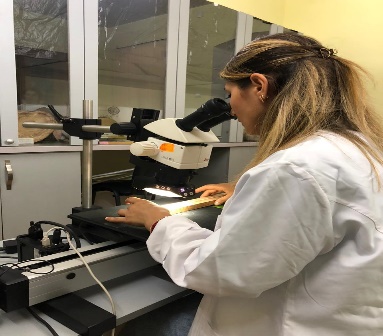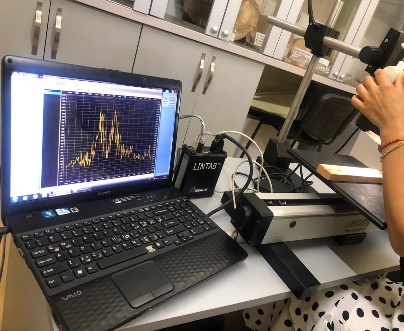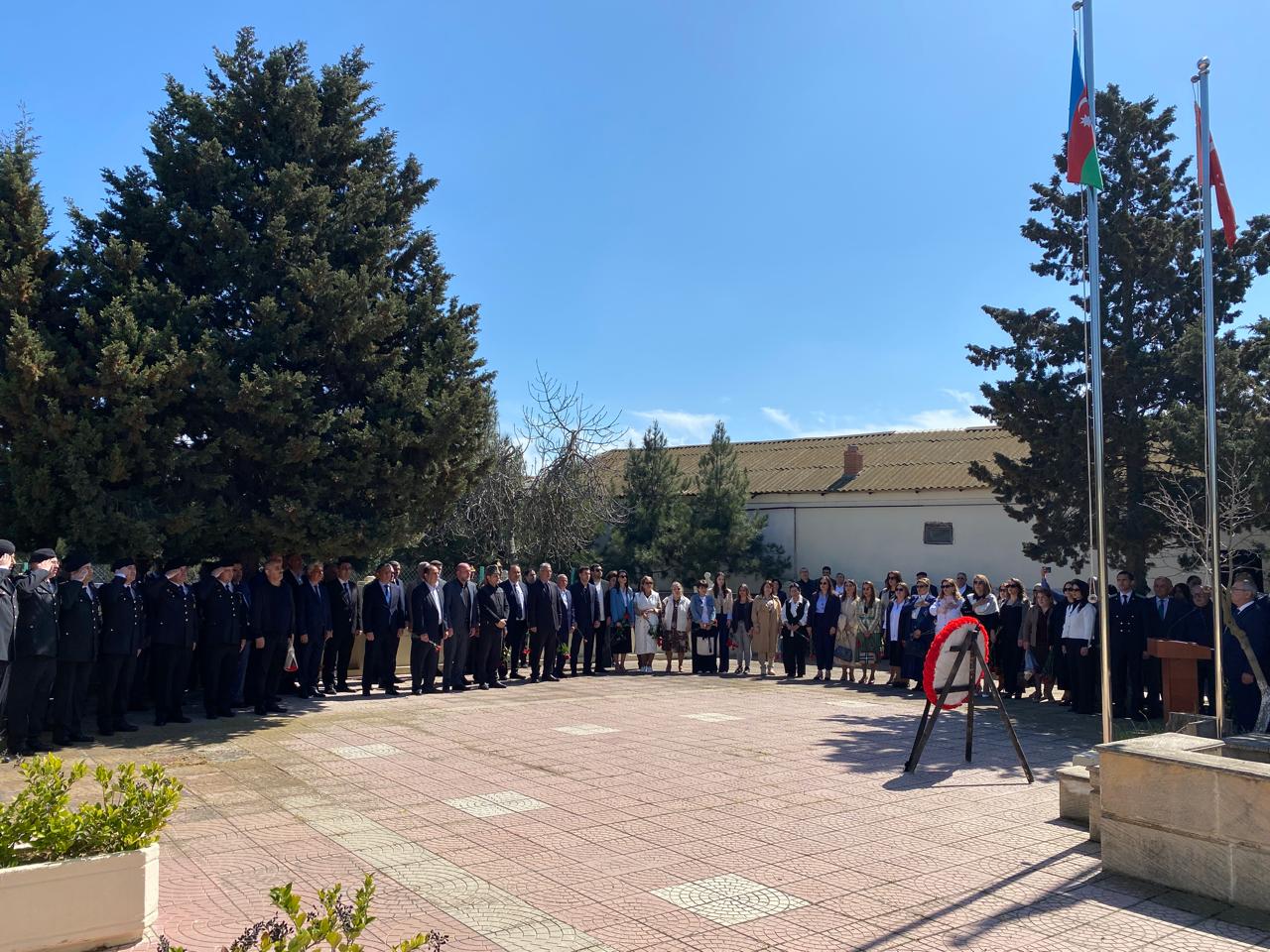Dendrochronological investigation of considerable old and historical monument species in the territory of the Dendrology Garden
In accordance with the individual work plan for 2023-2024 is being conducted primarily researches on Eldar pine (Pinus eldarica Medw.) and Aleppo pine (Pinus halapensis Mill.) species, which are widely used in greening in the territory of garden, parks and gardens dendrochronological studies in the direction of "Dendrochronological study of old and historical trees in the parks and gardens of the Absheron peninsula and creation of base data in the electronic information system" by the employees of the "Dendrochronology" laboratory of the public legal entity “Dendrology Garden”.
Aleppo pine Pinus halapensis Mill, selected as a research object, it is found in cultural conditions in Azerbaijan. It is a tree with a straight or curved trunk, reaching a height of 25 m and a diameter of 50 cm. It is pollinated with wind. It reproduces only by seeds. It is drought, heat, and frost-resistant, light-loving, and undemanding to the soil. Eldar pine - Pinus eldarica Medw., another object of study it was described for the first time in the territory of Azerbaijan in the western part of the Eldar plain, in the Eldar hollow. It is an elongated tree with a broad, broad ovoid canopy. The trunk is brownish-brown, unevenly cracked. Its height reaches 20 m. It reproduces by seeds. The ability to develop in dry, less fertile soil areas is one of the most essential perspective features in greening.
Research work was carried out in field and laboratory conditions. Samples with a diameter of 4-5 mm and a length of 32-38 cm were taken from the species perpendicularly to the vertical area by means of a suunto drill at a height of 1.5 m. Using the LINTAB 6 binocular microscope and the TSAPwin statistical program in the laboratory, it is possible to obtain information about global changes in nature based on the rings on the trunk. The data on the rings were read based on the Schweingruber method. The Cook-Kairiukstis method was used to determine the rings with a microscope, and the TSAPwin program applied by F.Rinin was used to detect false and missing rings.
As a result of research, Pinus halapensis Mill with a trunk diameter of 240 cm. of the species (40o29 18.4"N 50o0936.0"E) 128 years old (date of development 1895), trunk diameter 203 cm Pinus eldarica Medw. (40o29 18.4"N 50o0936.0"E) was studied to be 155 years old (the date of its development in 1868). According to the obtained results, Aleppo pine showed high development dynamics in 1932, 1934, 1942, 1998, 2002. In these years, the highest radial growth was observed at the age of 26 and 40. In 1945, 1954, 1961, 2002, 2008, depending on the influence of soil and climate conditions, the development weakened, and the lowest development dynamics were determined at the ages of 50, 65, and 112. Pinus eldarica Medw. in 1919, 1921, 1943, 1950, and 2019, it was observed that high development dynamics were continued. This can be clearly observed from the distance between the rings in the samples taken from the species. In 1898, 1908, 1962, 2000, 2021, it was determined that there were low indicators of the species under the influence of climatic factors.






